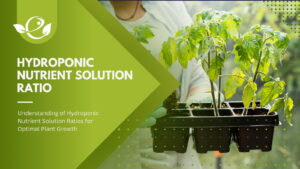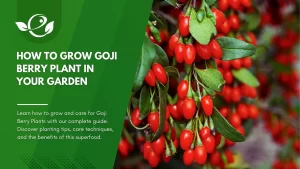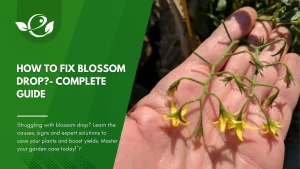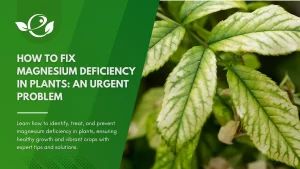Table of Contents
Flowering crabapple trees are a timeless addition to gardens, admired for their vibrant blooms, captivating fruits, and year-round beauty. Belonging to the genus Malus, these ornamental trees come in a wide array of shapes, sizes, and colors, making them suitable for diverse landscapes. Whether you’re creating a lush cottage garden, designing a contemporary urban space, or simply looking to add a pop of seasonal color, crabapple trees are an ideal choice.
But these trees are not just about aesthetics. Their blossoms attract pollinators like bees and butterflies, while their fruits serve as a food source for birds, adding ecological value to your garden. Moreover, their adaptability and disease-resistant varieties make them a practical option for both novice and experienced gardeners.
In this article, we’ll explore the top 15 flowering crabapple varieties, delve into their unique characteristics, and share expert tips on care and landscaping. Whether you’re planting your first tree or enhancing an existing garden, this guide will inspire and equip you to make the most of these beautiful trees.
Characteristics of Flowering Crabapple Trees
Flowering crabapple trees are treasured for their ornamental qualities and adaptability. Here’s a detailed look at their defining features:
Size and Growth Habit
- Height and Spread: Most varieties range from 10 to 25 feet in height, with a similar canopy spread. Some dwarf varieties stay under 10 feet, making them ideal for patios and small spaces.
- Growth Form: Crabapple trees come in a variety of shapes, including upright, spreading, weeping, or columnar forms, offering diverse landscaping options.
Spectacular Blooms
- Colors: Blooms range from pure white to soft pink and deep red, with some varieties featuring bi-colored flowers.
- Timing: They bloom profusely in spring, typically lasting 1-2 weeks, creating a breathtaking seasonal display.
- Fragrance: Many varieties have a sweet, subtle fragrance, adding an extra sensory dimension to gardens.
Foliage
- Summer: Most varieties have lush green foliage, while some, like Royal Raindrops, display purple or bronze leaves.
- Fall: Leaves transition into stunning hues of yellow, orange, or red, adding autumnal beauty to your garden.
Fruits
- Appearance: Fruits are small (typically less than 2 inches in diameter), coming in shades of red, orange, yellow, or even purple.
- Seasonality: These fruits often persist into winter, providing visual interest and food for wildlife when other food sources are scarce.
- Edibility: While not commonly eaten fresh, they are suitable for making jams, jellies, and cider.
Adaptability
- Climate Range: Hardy in USDA zones 4-8, though some varieties tolerate warmer or colder conditions.
- Soil Preferences: They thrive in well-drained soils but tolerate a wide range, including clay and sandy soils.
- Light Needs: Full sun is ideal for maximum bloom and fruit production, though they can tolerate light shade.
Disease Resistance
- Many modern cultivars are bred to resist common problems such as:
- Apple Scab: Causes leaf spots and premature defoliation.
- Fire Blight: Leads to branch dieback and “scorched” leaves.
- Powdery Mildew: Results in a white, powdery coating on leaves.
Why Choose Flowering Crabapple Trees for Your Garden?
Flowering crabapple trees are more than just ornamental; they serve multiple roles in gardens, making them a practical and rewarding choice for any gardener.
Aesthetic Appeal
- Seasonal Interest:
- Spring: Abundant flowers in vibrant colors create a striking focal point.
- Summer: Dense foliage provides shade and a lush appearance.
- Fall: Fruits and foliage contribute to a stunning autumnal palette.
- Winter: Bare branches, often with persistent fruits, create a sculptural beauty against snow or frost.
- Versatility in Design: Their varied sizes and shapes make them suitable as standalone specimen trees, in hedges, or as part of mixed borders.
Support for Pollinators and Wildlife
- Pollinator Habitat: The profuse blooms attract bees, butterflies, and other pollinators, supporting biodiversity in your garden.
- Bird-Friendly Fruits: Birds feast on the small fruits, especially in winter when food is scarce. Species such as robins, cedar waxwings, and cardinals are frequent visitors.
Ideal for Small and Medium-Sized Gardens
- Compact varieties like Adirondack or Lancelot are perfect for urban settings or small gardens.
- Some dwarf cultivars thrive in pots, making them a beautiful addition to patios and balconies.
- Many varieties are disease-resistant, reducing the need for chemical treatments.
- They require minimal pruning and adapt well to a range of growing conditions, making them suitable for beginner gardeners.
Environmental Benefits
- Crabapples help reduce soil erosion with their root systems.
- Their blossoms and fruits play a crucial role in local ecosystems, supporting pollinators and wildlife year-round.
Cultural and Historical Significance
- In many cultures, crabapple trees symbolize fertility, love, and renewal.
- Historically, their fruits were used in traditional medicine and culinary applications, such as making cider and preserves.
Versatility in Usage
- Edible Uses: Fruits can be used in jams, jellies, and chutneys, adding a tangy flavor.
- Decorative Uses: Their colorful branches, adorned with fruits or blossoms, can be used in floral arrangements.
- Shading: Larger varieties provide shade, making them ideal for garden seating areas.
Pro Tip: Choosing the right variety for your specific needs (space, climate, and aesthetic preference) ensures you maximize the benefits of flowering crabapple trees.
By selecting flowering crabapple trees, gardeners not only enhance their landscapes but also contribute to creating a balanced and thriving ecosystem. These trees are a testament to the beauty and utility that nature offers in a single package.
Top 15 Flowering Crabapple Varieties
Each flowering crabapple tree brings its unique charm and features to the garden. Below is a detailed exploration of 15 stunning varieties, their characteristics, and ideal uses to help you find the perfect match for your landscape.
1. Prairifire
- Height & Spread: 15–20 feet tall and wide.
- Blooms: Vibrant reddish-pink flowers.
- Foliage: Deep green with hints of purple; transitions to bronze in autumn.
- Fruits: Glossy red, persistent into winter.
- Disease Resistance: High resistance to scab, fire blight, and rust.
- Best For: Urban landscapes or gardens needing a pop of color.
- Why Choose This Variety: Prairifire is one of the most popular varieties for its long-lasting color and minimal maintenance.

More Details:
- A full sun lover, this free is easily grown in moderately fertile, well-drained soils. Once established, it is drought tolerant.
- Perfect as a specimen plant, in city gardens or cottage gardens.
- Require only minimal pruning in late winter fo remove damaged, diseased, or misplaced growth.
- Toxic to dogs, toxic fo cats, toxic fo horses.
2. Royal Raindrops
- Height & Spread: 15–20 feet tall and 12–16 feet wide.
- Blooms: Magenta-pink flowers that stand out against the purple foliage.
- Foliage: Purple leaves turning bronze in the fall.
- Fruits: Small, shiny red fruits.
- Special Features: Upright and rounded growth habit; excellent disease resistance.
- Best For: Compact spaces where a bold color statement is desired.

More details:
- Water Needs: Average
- Soil Type: Chalk, Clay, Loam, Sand
- Soil pH: Acid, Alkaline, Neutral
- Soil Drainage: Moist but Well-Drained,
- Well-Drained
- Characteristics: Fragrant, Showy, Fruit & Berries
- Tolerance: Drought
- Attracts: Birds, Butterflies, Bees
3. Sugar Tyme
- Height & Spread: 15–20 feet tall with a slightly narrower spread.
- Blooms: Fragrant white flowers cover the tree in spring.
- Fruits: Bright red fruits that persist into winter, attracting birds.
- Disease Resistance: Excellent resistance to scab and rust.
- Best For: Wildlife-friendly gardens and urban landscapes.
- Why Choose This Variety: Its combination of beauty, fragrance, and bird appeal makes it a versatile choice.

More Details:
- Water Needs:Average
- Soil Type: Chalk, Clay, Loam, Sand
- Soil pH: Acid, Alkaline, Neutral
- Soil Drainage: Moist but Well-Drained,
- Well-Drained
- Characteristics: Fragrant, Showy, Fruit & Berries
- Tolerance: Drought
- Attracts: Birds, Butterflies, Bees
4. Adirondack
- Height & Spread: 12–16 feet tall, 6–8 feet wide.
- Blooms: Dense clusters of white flowers.
- Foliage: Bright green leaves that turn golden yellow in fall.
- Fruits: Small orange-red fruits that persist into winter.
- Special Features: Upright, columnar growth habit; minimal fruit litter.
- Best For: Tight spaces and formal landscapes.

More Details:
- Exposure: Full Sun
- Season of Interest: Spring (Late), Summer (Early, Mid, Late), Fall, Winter
- Maintenance: Low
- Water Needs: Average
- Soil Type: Chalk, Clay, Loam, Sand
- Soil pH: Acid, Alkaline, Neutral
- Soil Drainage: Moist but Well-Drained
- Characteristics: Fragrant, Plant of Merit, Showy, Fruit & Berries
- Tolerance: Drought
- Attracts: Birds, Butterflies, Hummingbirds, Bees
5. Snowdrift
- Height & Spread: 15–20 feet tall and wide.
- Blooms: Masses of pure white flowers in spring.
- Fruits: Orange-red fruits that persist into winter.
- Disease Resistance: Resistant to apple scab and mildew.
- Best For: Urban and suburban gardens.
- Why Choose This Variety: Its uniform, rounded shape makes it a standout specimen tree.

More Details:
- Exposure: Full Sun
- Season of Interest: Spring (Mid, Late), Summer (Early, Mid, Late), Fall, Winter
- Maintenance: Low
- Water Needs: Average
- Soil Type: Chalk, Clay, Loam, Sand
- Soil pH: Acid, Alkaline, Neutral
- Soil Drainage: Moist but Well Drained
6. Lancelot
- Height & Spread: 8–10 feet tall and wide.
- Blooms: Creamy white flowers with a delightful fragrance.
- Fruits: Small, golden-yellow fruits.
- Special Features: Dwarf variety; ideal for small gardens or containers.
- Best For: Patio pots, terraces, or as a focal point in compact spaces.

More Details:
- Shape: Compact, oval upright
- Exposure: Full Sun
- Foliage: Crisp green
- Fall Foliage: Yellow
- Zone: 4-7
7. Donald Wyman
- Height & Spread: 15–20 feet tall and wide.
- Blooms: Pure white flowers.
- Fruits: Glossy red fruits that persist through winter.
- Disease Resistance: Excellent resistance to apple scab and rust.
- Best For: Large gardens or naturalized areas.
- Why Choose This Variety: Known for its robust nature and year-round appeal.

More Details:
- Donald Wyman’ flowering crabapple was discovered as a spontaneous seedling on Peters Hill of the Arnold Arboretum of Harvard University in 1950. It was named in 1970 in honor of Donald Wyman (1904-1993) who served as horticulturist at the Arboretum from 1936-1970.
8. Sargent
- Height & Spread: 6–10 feet tall and 8–12 feet wide.
- Blooms: White flowers with a delicate fragrance.
- Fruits: Tiny, bright red fruits.
- Special Features: Small, shrubby form; excellent pollinator plant.
- Best For: Wildlife gardens and as a low-maintenance hedge.

More Details:
- Family (English): Rose
- Family (botanic): Rosaceae
- Tree or plant type: Tree, Shrub
- Foliage: Deciduous (seasonally loses leaves)
- Native locale: Non-native
- Size range: Medium shrub (5-8 feet), Large shrub (more than 8 feet), Compact tree (10-15 feet), Small tree (15-25 feet)
- Light exposure: full sun (6 hrs direct light daily)
- Hardiness zones: Zone 4, Zone 5 (Northern Illinois), Zone 6 (City of Chicago), Zone 7, Zone 8
- Soil preference: Acid soil, Moist, well-drained soil
- Tolerances: Alkaline soil, clay soil, Dry sites, Occasional drought, Occasional flooding
- Season of interest: early winter, midwinter, mid-spring, mid-fall, late fall
9. Centurion
- Height & Spread: 20–25 feet tall, 15–20 feet wide.
- Blooms: Rose-red flowers.
- Fruits: Red fruits that remain into early winter.
- Foliage: Green leaves that develop orange and red hues in fall.
- Best For: Larger gardens and spaces with room for its spreading canopy.
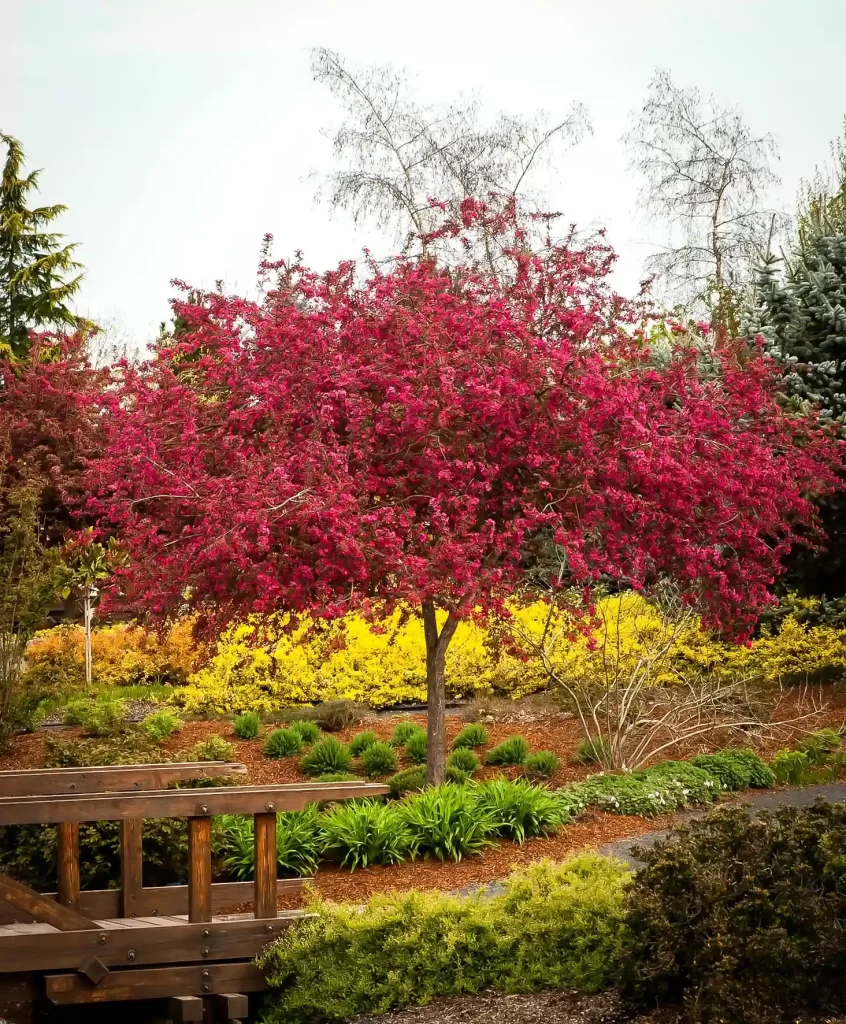
More Details:
- Exposure: Full Sun
- Season of Interest: Spring (Mid, Late), Summer (Early, Mid, Late), Fall
- Maintenance: Low
- Water Needs: Average
- Soil Type: Chalk, Clay, Loam, Sand
- Soil pH: Acid, Alkaline, Neutral
- Soil Drainage: Moist but Well-Drained
10. Louisa
- Height & Spread: 10–15 feet tall and wide.
- Blooms: Soft pink flowers with a subtle fragrance.
- Shape: Graceful, weeping growth habit.
- Fruits: Small yellow pomes.
- Special Features: Elegant and compact.
- Best For: As a centerpiece in ornamental gardens or near water features.

More Details:
- Common Name: flowering crabapple
- Type: Tree
- Family: Rosaceae
- Zone: 4 to 8
- Bloom Time: April
- Bloom Description: Pink
- Sun: Full sun
- Water: Medium
- Maintenance: Low
- Suggested Use: Flowering Tree
- Flower: Showy
- Attracts: Birds, Butterflies
- Fruit: Showy, Edible
- Other: Winter Interest
- Tolerate: Air Pollution
11. Indian Magic
- Height & Spread: 15–20 feet tall and wide.
- Blooms: Vibrant reddish-pink flowers.
- Fruits: Orange-red fruits that persist into winter.
- Foliage: Deep green in summer, turning golden in fall.
- Best For: Adding seasonal interest with its showy flowers and fruits.

More Details:
- Position: Full sun or light, dappled shade.
- Soil: Well drained, fertile soil.
- Hardiness: Hardy.
- Flowering Period: April – May.
- Flower Colour: Deep pink.
- Rate of Growth: Moderate.
- Habit: Malus ‘Indian Magic’ grows to be a small tree, usually slender and upright initially, filling out once planted with a rounded, densely branching crown.
- Notes: Malus ‘Indian Magic’ can be pruned to shape in late winter or early spring if required.
12. Evereste
- Height & Spread: 16–20 feet tall and wide.
- Blooms: Bright white flowers with pink buds.
- Fruits: Glossy orange-red fruits.
- Disease Resistance: Highly resistant to scab and blight.
- Best For: Pollinator gardens and areas needing a robust tree.

More Details:
- Moisture: Moist but well–drained, Well–drained
- pH: Acid, Alkaline, Neutral
- Position: Full sun, Partial shade
- Aspect: South–facing or North–facing or East–facing or West–facing
- Hardiness: H6
13. Malus ‘Red Jade’
- Height: 12–15 feet tall
- Spread: 15.00 to 20.00 feet
- Blooms: Pink buds opening into white flowers.
- Shape: Graceful, weeping growth habit.
- Fruits: Small, bright red fruits.
- Best For: Ornamental gardens with space for its unique form.

More Details:
- Common Name: weeping crabapple
- Type: Tree
- Family: Rosaceae
- Zone: 4 to 8
- Sun: Full sun
- Water: Medium
- Maintenance: Low
- Fruit: Showy, Edible
- Other: Winter Interest
- Tolerate: Air Pollution
14. Spring Snow
- Height & Spread: 20–25 feet tall and wide.
- Blooms: Fragrant, showy white flowers.
- Foliage Color: Green
- Special Features: Fruitless variety; low maintenance and clean.
- Best For: Landscapes where fruit litter is a concern.

More Details:
- Sun Exposure: Full Sun
- Soil Type: Well Drained
- Moisture: Moderate
- Growth Rate: Fast
- Flower Color: White
- Foliage: Deciduous
- Fall Color: Yellow
- Pollinator Friendly: Yes
15. Molten Lava
- Height & Spread: 12–15 feet tall and wide.
- Blooms: Masses of white flowers.
- Shape: Cascading branches, adding a dramatic effect.
- Fruits: Red-orange pomes that persist into winter.
- Best For: Ornamental gardens and winter interest.

More Details:
This tree will require occasional maintenance and upkeep, and is best pruned in late winter once the threat of extreme cold has passed. Gardeners should be aware of the following characteristic(s) that may warrant special consideration;
- Messy
Molten Lava Weeping Crab is recommended for the following landscape applications;
- Accent
- Shade
- General Garden Use
Each variety has unique features and benefits, ensuring there’s a flowering crabapple tree for every garden type and aesthetic. By selecting from these top 15 varieties, you can add timeless beauty and ecological value to your outdoor space.
Care Tips for Flowering Crabapple Trees
Proper care is essential to maximize the beauty and longevity of flowering crabapple trees. Here’s a detailed guide to ensure your trees thrive:
Planting Tips
- Site Selection:
- Choose a location with full sun (at least 6 hours daily) for optimal flowering and fruiting.
- Ensure the area has well-drained soil to prevent root rot. Avoid low-lying areas prone to waterlogging.
- Soil Preparation:
- While crabapples tolerate various soils, slightly acidic to neutral soils (pH 5.5–7.0) are ideal.
- Incorporate compost or organic matter to improve drainage and fertility.
- Planting Time: The best times to plant are in early spring or fall, allowing roots to establish before extreme temperatures.
Watering Needs
- Young Trees:
- Water deeply once a week during the first year to establish strong roots.
- Use a 2–3-inch layer of mulch around the base to retain soil moisture while keeping mulch 2–3 inches away from the trunk.
- Mature Trees: Once established, flowering crabapples are drought-tolerant but benefit from supplemental watering during prolonged dry spells.
Fertilization
- Timing: Fertilize in early spring before blooming using a balanced, slow-release fertilizer (e.g., 10-10-10).
- Organic Alternatives: Apply compost or well-rotted manure around the base annually for sustained nutrient release.
- Avoid Over-fertilization: Excess nitrogen can promote excessive foliage at the expense of flowers and fruits.
Pruning and Maintenance
- When to Prune: Conduct pruning during late winter or early spring when the tree is dormant.
- What to Prune:
- Remove dead, diseased, or crossing branches to maintain airflow and tree health.
- Shape the canopy to ensure even light penetration.
- Avoid Over-pruning: Excessive removal can reduce blooming and fruit production.
- Common Pests & Diseases:
- Aphids: Can cause leaf curling; manage with neem oil or insecticidal soap.
- Spider Mites: Cause speckled discoloration; use horticultural oil for control.
- Apple Scab: Causes leaf spots and defoliation; choose resistant varieties like Prairifire.
- Fire Blight: Leads to blackened branches; prune affected areas and sanitize tools.
- Preventive Measures:
- Maintain proper spacing for airflow to reduce humidity-related diseases.
- Avoid overhead watering, which can promote fungal infections.
Seasonal Care
- Spring: Apply fertilizer, inspect for pests, and enjoy the blooms.
- Summer: Water during dry periods and monitor for pests or diseases.
- Fall: Remove fallen leaves and fruits to prevent disease spread.
- Winter: Apply mulch for root protection and prune during dormancy.
Long-Term Care
- Mulching: Maintain a mulch layer year-round to regulate soil temperature and moisture.
- Soil Testing: Periodically test soil to ensure the pH and nutrient levels remain optimal.
- Rejuvenation Pruning: For older trees, rejuvenate growth by selectively removing older branches over several seasons.
Design Ideas with Crabapple Trees
Flowering crabapple trees are versatile and enhance garden aesthetics in numerous ways. Below are creative design ideas for incorporating these trees into your landscape.
Standalone Specimen Trees
- Focal Points:
- Use crabapples as a centerpiece in lawns, courtyards, or entryways.
- Varieties like Royal Raindrops or Spring Snow create stunning standalone displays with their vibrant blooms and foliage.
- Tips for Placement: Position trees where their seasonal changes can be fully appreciated, such as near patios or outdoor seating areas.
Group Plantings
- Clusters or Groves:
- Plant multiple trees of the same or complementary varieties for a naturalized effect.
- Varieties like Sugar Tyme and Adirondack work well together in multi-tree arrangements.
- Spacing: Allow 15–20 feet between trees to prevent overcrowding while maintaining visual harmony.
Borders and Hedges
- Compact Varieties:
- Use smaller trees like Sargent or Lancelot to form decorative hedges or borders.
- These can define garden sections or line pathways for an inviting look.
- Practical Benefits: Crabapples used as borders also provide windbreaks or privacy screens.
Mixed Landscapes
- With Perennials and Shrubs:
- Pair crabapples with flowering shrubs like azaleas or perennials such as daylilies for a layered look.
- Combine contrasting colors; for instance, pair white-blooming Snowdrift with purple lavender.
- Wildlife Gardens: Combine crabapples with other pollinator-friendly plants like coneflowers or milkweed to support biodiversity.
Themed Gardens
- Seasonal Displays:
- Use varieties with dramatic fall foliage like Centurion to anchor autumn-themed gardens.
- Winter-interest varieties like Donald Wyman, with persistent fruits, enhance holiday garden decor.
- Cottage Gardens: Crabapples like Louisa blend well with climbing roses, hollyhocks, and rustic structures.
Small Spaces and Containers
- Dwarf Varieties: Varieties like Lancelot or Adirondack are perfect for pots or small urban gardens.
- Placement Tips: Use these trees on balconies, patios, or near garden entrances to maximize space.
Creating Canopies
- Shaded Areas: Larger varieties like Centurion or Donald Wyman provide dappled shade for garden seating areas.
- Layered Planting: Plant shade-tolerant ground covers like hostas or ferns beneath the canopy for a lush, multi-tiered effect.
Water Features
- Reflective Beauty: Plant weeping varieties like Louisa or Red Jade near ponds or fountains to enhance their cascading forms.
- Wildlife Attraction: These trees provide food and shelter for birds near water sources, creating a dynamic natural habitat.
Pathways and Avenues
- Lining Walkways: Use compact trees like Adirondack to create a symmetrical walkway design.
- Avenue Planting: Create a grand entrance by lining driveways with uniform varieties such as Spring Snow.
Conclusion
Flowering crabapple trees are more than just ornamental additions—they’re a celebration of nature’s seasonal splendor. From spring’s dazzling blooms to autumn’s fiery foliage and winter’s persistent fruits, these trees bring beauty and interest throughout the year. With a variety of sizes and forms to choose from, they can fit into almost any garden design, whether as a focal point, border planting, or wildlife haven.
By selecting the right variety for your climate and landscape needs, and following the care tips shared in this guide, you can ensure your flowering crabapple thrives for years to come. Thoughtful design ideas, such as pairing crabapples with complementary plants or placing them near water features, further enhance their visual impact.
As you plan your garden, consider the timeless charm and versatility of flowering crabapple trees. Not only will they transform your outdoor space into a vibrant retreat, but they’ll also create a lasting legacy of beauty, sustainability, and ecological harmony. Start your journey with one of the top 15 varieties, and watch your garden come to life with the magic of flowering crabapples.




